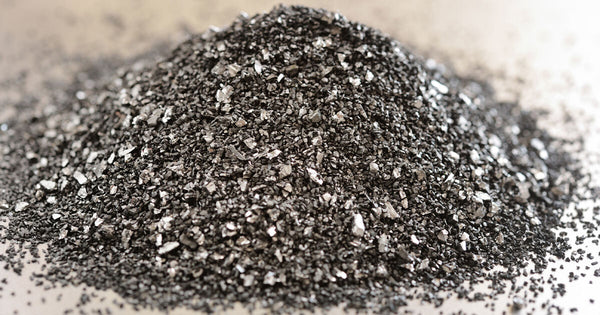Getting to Know Your Filter Media: CRC Filter Media Types
May 07, 2021
In the cannabis color remediation process, manufacturers have a wide range of filter media at their disposal. As part of an optimized extraction workflow, a color remediation column (CRC) can help remove the undesirable compounds to improve an oil’s color and taste.
As a processor, you want the highest quality cannabis oil possible without reducing your throughput, going over your budget, or putting yourself or your customers in danger.
In the search for the perfect filter media type to remove undesirables like chlorophyll, carotenoids, pigments, and other contaminants from your oil, there are few substances that can significantly improve the look and quality of your extracts.
What Are the Different Types of Filter Media?
In the color remediation process, operators gently pack filtration media into the CRC. Processors can choose to use one or several types of filter media in a variety of ratios, depending on the production needs and intended product type.
In the CRC, the filter media acts as a stationary phase in the chromatography process that can remove pesticides, pigments, and other polar impurities. Now, choosing the right type of filter media for you is where things start to get a bit more complex.
Color remediation media comes in a variety of consistencies, colors, and adsorbent capabilities. You can choose from an array of powders, beads, and adsorbent particles with varying porosity, surface area, and cost.
Multiple filter media can be used at the same time for improved purification. Experts recommend adding the media in the CRC in a layered fashion.
The most popular types of filter media for color remediation include the following:
-
Activated charcoal
-
Diatomaceous earth
-
Activated alumina
-
Activated bentonite clay
-
Activated magnesium silicate
-
Activated bleaching earth
-
Silica gel
-
Degumming enzyme
Understanding the properties of each filter media type can help you identify its benefits and limitations. Knowing these can help you zero in on one that can work in your extraction facility.
Activated Charcoal
 Activated charcoal, also called activated carbon, is a powerful filter used to remove undesirables such as colors, flavors, and other unwanted substances. These undesirables are naturally attracted to carbon. It pulls out these contaminants as they pass through the filter.
Activated charcoal, also called activated carbon, is a powerful filter used to remove undesirables such as colors, flavors, and other unwanted substances. These undesirables are naturally attracted to carbon. It pulls out these contaminants as they pass through the filter.
Activated carbon is chemically activated using phosphoric acid to produce a powdered hardwood form. Its small pores give it a large surface area to adsorb the material, This filtration media has a pH between 5 and 7.
Pros
-
Improves the flavor of the oil
-
Removes colors, flavors, and other undesirables
-
Cost effective
-
Readily accessible
-
Large surface-area-to-size ratio
Cons
-
Needs replacement regularly
-
May not remove every contaminant
-
Slow filtration
-
Can adsorb active compounds and reduce yield
-
Can lower potency if used incorrectly
Activated Bentonite Clay
Activated bentonite clay (T-5) can be used during the purification and pesticide remediation of cannabis oil. This filter type can be used as the top layer in color remediation to help decolorize oils and produce high-clarity extracts.
Activated bentonite clay is a natural absorbent that has a neutral pH level. Plus, activated bentonite clay will not leave residual traces in your oil. It is cost-effective to use for large-scale extraction.
Pros
-
Efficient at removing color
-
Cost-effective
-
Neutral pH
-
Leaves no residual traces
Cons
-
Slow filtering
-
Requires preparation
-
Can cause respiratory damage if inhaled
Silica Gel
Activated silica gel powder is commonly used as a stationary phase alongside bentonite clay in chromatography for purification. Activated silica gel adsorbs a host of substances including carotenoids, chlorophyll, and other water-soluble impurities (dark green and orange pigments).
Activated silica gel is compatible with a fast flow rate process and comes at a cost-effective price. Silica gel has a low moisture level and can last for a long time. It is perfect for non-polar solvent refinement.
Pros
-
Efficient at removing colors and polar impurities
-
Works with rapid flow rate systems
-
Cost-effective
-
Long-lasting
Cons
-
Requires additional media for better purification
-
Can adsorb active compounds
-
Can cause respiratory damage if inhaled
Diatomaceous Earth
 Diatomaceous earth is a naturally-occurring, sedimentary rock with a soft and crumbly texture. This fine white powder is an efficient filter media and decolorizer. Its porosity can capture microscopic particles.
Diatomaceous earth is a naturally-occurring, sedimentary rock with a soft and crumbly texture. This fine white powder is an efficient filter media and decolorizer. Its porosity can capture microscopic particles.
Commonly used as a filter bed, this filtration material can work with fast flow systems and will not cause any clogging. Diatomaceous earth is a great supplement to any filtration media.
Pros
-
Efficient at removing color and other impurities
-
Porosity
-
Safe to use
Cons
-
Requires safety equipment to use
-
Can cause respiratory damage if inhaled
-
Can be messy to use
Activated Alumina
Activated alumina, also known as aluminum oxide, is produced by the dehydration of aluminum hydroxide at high temperatures. Activated alumina is a versatile sorbent and desiccant that is commonly used in chromatography to purify botanicals.
This filter media can pull out the red and yellow pigments and is mainly used to remove color, fats, and polar compounds. The material’s porous and spherical composition enable it to be effective adsorbent in removing undesirables.
In addition, activated alumina is very stable and has a high crush resistance. Activated alumina is helpful in pulling in moisture due to its porosity. Some contaminants stick to the media due to their chemical attraction.
Best of all, activated alumina can be reused over again. Return the material to its original absorption efficiency by heating it between 350 to 600º F. Make sure to follow safety procedures listed on its safety data sheet when dealing with this white solid powder.
Pros
-
Safe to use
-
Does not leak into product
-
Efficient at removing undesirables such as color, fats, and polar compounds
-
Cost effective
-
Large surface area
-
No degradation at high pressures or temperatures
Cons
-
Short lifespan
-
High maintenance disposal procedures
-
May require pH adjustment
Activated Magnesium Silicate
Activated magnesium silicate, also known as MagSil-PR, is a strong decolorizer and remediator in chromatography and color remediation columns. Activated magnesium silicate can remove pigments, pesticides, and improve the clarity of your oils.
Magnesium silicates bind to polar, water-soluble substances to remove them from the final product. This filtration media has a large surface area to more quickly and efficiently absorb the undesirables.
Pros
-
Efficient at removing color and pesticides
-
Large surface area
-
Removes fats and lipids
-
Works with fast flow rate systems
Cons
-
Requires additional media for optimal filtration
-
More expensive than other filtration media
Activated Bleaching Clay
Activated bleaching clay (T-41) is a different grade of activated bentonite clay. It can be used in oil purification, pesticide remediation, and removal of certain odors. It is commonly used in color remediation columns. Activated bleaching clay has a pH level of 3. It also consists of 10% activated carbon.
Pros
-
Efficient at removing colors
-
Efficient at removing pesticides with activated magnesium silicate
Cons
-
More expensive than other filtration media
-
Requires additional filtration media for optimal purification
Degumming Enzyme
Degumming enzyme is a phospholipase powder that can be used to break down phospholipids (plant gums), sugar lipids, and triglycerides. This type of filter media can be used alongside other filter media to improve the overall purification.
When used in CRC technology, you can add a thin top layer of degumming enzyme with the rest of your media. Degumming enzyme has a low pH of 2.5 but can be used in small amounts to keep the acidity in check. This filter media prefers temperatures about 40º C.
Pros
-
Increases the efficiency of other adsorbents
-
Requires a minimal amount to work
-
Cost-effective
-
Efficient at removing plant gums
Cons
-
May need pH adjustment to work
-
Works better at certain temperatures
-
Requires additional media for proper purification
Handling CRC Filter Media
When handling any type of filter remediation media, we recommend using the right personal protective equipment (PPE). Always refer to the product’s safety data sheets (SDS) for proper handling and disposal guidelines.
As a rule of thumb, the following PPE is recommended when handling CRC filtration media:
-
Safety glasses
-
Gloves
-
Respirator with adequate filters for small particles
-
Lab coat
-
Non-slip footwear
High-Flow Filter Media From Media Bros

If you are looking for a CRC filter media that maximizes color remediation in light hydrocarbon or supercritical carbon dioxide extraction at high flow rates, explore Media Bros’ innovative line of filter media options.
-
CRX: Designed for hydrocarbon extraction, CRX is easy-to-use, safe, and able to handle high flows. Remove unwanted colors while keeping the terpenes and cannabinoids in your oil. No prep required. This ready-to-use filter media will streamline your workflow.
-
CRY: If you have difficult-to-process biomass and are working with hydrocarbon extraction, CRY is an amped-up version of CRX. Compared to CRX, CRY has about 1.5 times the embedded silica content for greater filtration of colors.
-
CR2: For CO2 extraction equipment, CR2 is the latest filtration media that can improve the purity and look of CO2 extracts, all while removing the bitter “CO2 taste.”
See what all the hype is about by requesting a sample of our proprietary media. You have to see it to believe it.






